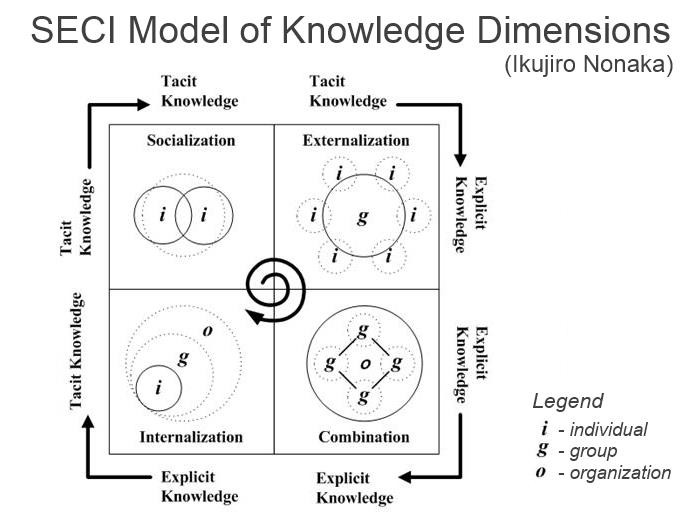Developing chatbot? Train it like a social human! How? Get insights from our very own Vinayak Joglekar, Co-founder and CTO, Synerzip.
It’s 2018 and corporations ought to improve their understanding of customers, vendors, staff, and investors. Businesses want more ears and mouths to soak up and broadcast information. Machines participating with humans in productive conversations using Natural Language processing is not a dream anymore, as shown by Siri, Alexa, and Google-Home! So, why is this important? Companies can now do more for their customers in 2018 than ever before. Before we set sail, let’s take a step back and look at what makes the transfer of experience hard.
Tacit and Explicit knowledge
Tacit knowledge is what we’ve internalized which is what we actually use after we make a variety of choices in our personal and business life. A pilot uses his tacit knowledge and not explicit information like a guide when flying an oversized aircraft. Doctors, lawyers, architects, and troopers owe their tacit knowledge to years of coaching from their leaders. This tacit knowledge transfer happens when socializing as per Alex Pentland in his illustrious book Social Physics.
Explicit knowledge is what we tend to externalize and express in English or another language in articles, books, videos, podcasts, databases, and spreadsheets etc.
The SECI model, developed by Nonaka and Takeuchi, for organizations to grow their knowledge-base by cyclically surfing the subsequent four steps that appears like an ever-increasing spiral.
- Socialization ( Implicit to Implicit)
- Externalization (Implicit to Explicit)
- Combination (Explicit to Explicit)
- Internalization (Explicit to Implicit)
SECI Model of knowledge transfer
Tacit knowledge is difficult to externalize. Nobody will communicate all he/she is aware of by writing it down. On the contrary, socialization is simple. It happens simply as a result of the social setting that provides the context. Human brain snacks on info that’s in context. On the contrary, most of the communication directed at you on the net is sheer noise thanks to lack of context. Wouldn’t it be tremendous if chatbots storing lots of explicit knowledge might use it in a virtually social setting that provides the context?
Let externalization be handled by chatbots
Imagine having a buddy by your side who has the patience to answer all of your queries that you simply want to be answered to grasp and participate in a conversation. As children, we all were curious but we stopped asking queries after we saw adults around us losing patience.
Meanwhile, chatbots can have thousands of conversations. Socializing with chatbots makes it simple for us to weave bits and bytes of data within the right context. This information is provided accurately within the right context by a chatbot that’s lurking the background. We continue with our daily routine of using our enterprise software system or our favorite app. Explicit knowledge is internalized by a chatbot in just a few seconds. Except for chatbots to learn new knowledge, they have to raise queries and plug incoming bits of data in the right place. Ontologies offer the underlying infrastructure for chatbots to prepare information – somewhat parallel to the method humans learn by organizing connected facts within the same part of the brain.
Creating an ontology, the easy way!
An ontology may be a little more than a taxonomy – a tree-like structure that organizes entities in categories, subclasses, and instances. Additionally, it also establishes connections between leaves of the tree by specifying one way, two way, and transient relationships. Neo4j graph database represents it well. Organizing the information specific to your company’s business domain in a graph may be an intimidating task. Several businesses have spent years building ontologies. Little doubt that it’s an endeavor that quite pays for itself- however, the sheer volume of labor deters corporations from investments in this project.
Synerzip has developed a semi-automated method of building ontologies. The system takes documents relevant to your company’s domain – which can be catalogs, brochures, articles, emails, spreadsheets, resumes or handbooks and puts them in a corpus. Terms that occur a few hundred times in a corpus are manually organized by an SME to make the seed ontology. This may take many days or weeks at the most.
Automation kicks in once you’ve got a fairly well-colonized seed ontology. The program computes similarity scores supported by the context in which they appear. Terms having high similarity are placed within the same category. There still are some terms where a human is consulted to resolve challenges. However, it makes the project a lot easier and viable for corporations about to build their ontologies from scratch. For businesses who have already engineered their ontologies, this utility can help in updating and improving the ontology further.
Building chatbots have been made easy by applications like the Facebook, Slack, and Skype. By the end of this year, we’ll see chat bots being favored over mobile interfaces by several applications.



